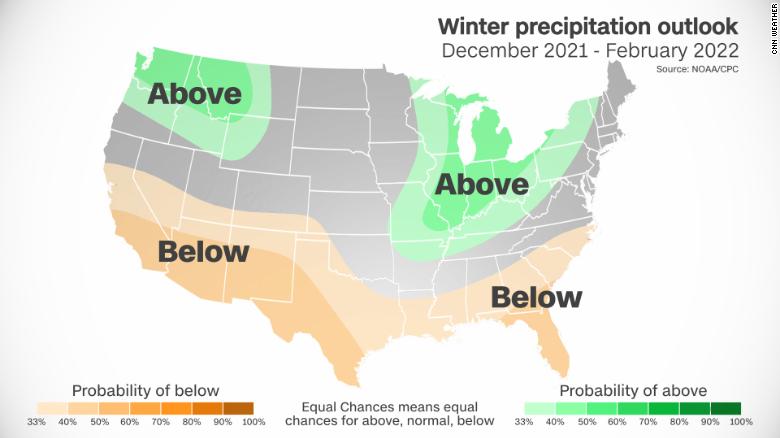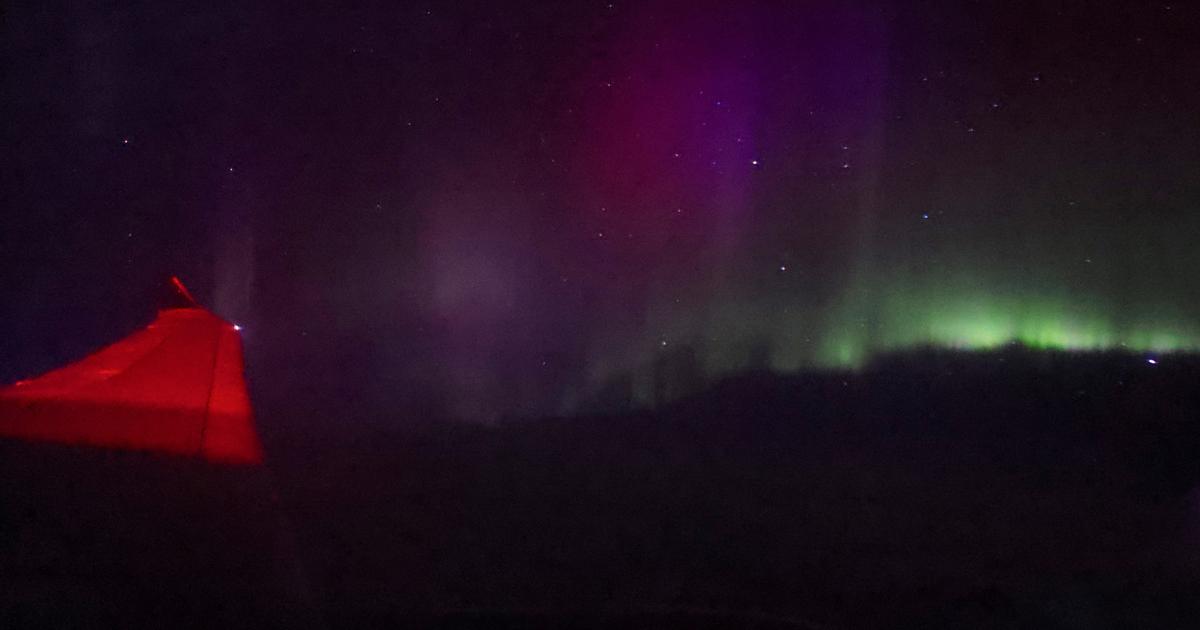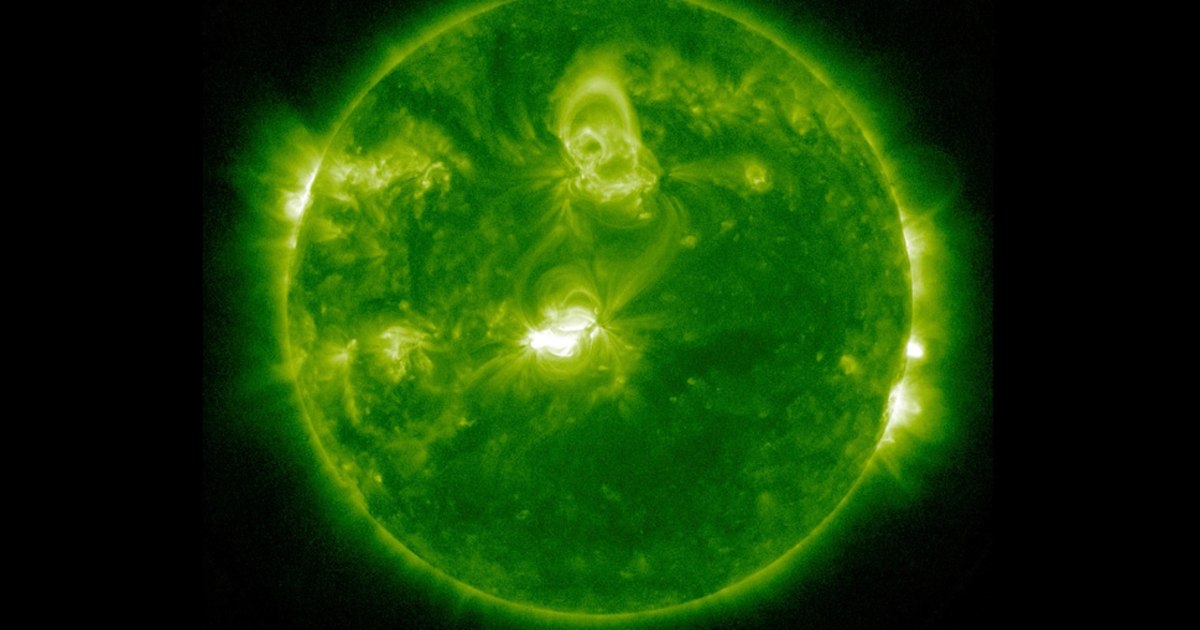USA, the most CO2-generating country in history 0:53
(CNN) -
The southwestern United States will continue to battle drought conditions this winter, the National Oceanic and Atmospheric Administration (NOAA) predicted Thursday in its outlook for the upcoming boreal winter.
Meanwhile, a warmer and drier-than-normal winter is forecast for the southern region of the country, along with a wetter-than-normal winter for the Pacific Northwest and northern Rockies, the agency said.
La Niña has already arrived and will stay.
Here's what it means for the drought- and hurricane-stricken southeast
Overall, cooler and wetter conditions are expected in some parts of the north of the country, and warmer and drier in much of the south, in line with the typical La Niña weather phenomenon.
The Southwest may be the hardest hit by this forecast.
The area is ravaged by drought and will most likely not improve during the winter.
More than 90% of the west is in drought conditions, and more than half of the region is in extreme or exceptional drought.
California just faced its driest year in nearly a century as the state remains in a drought emergency.
Level 5 atmospheric river could trigger flooding in drought-stricken California
Not only will the Southwest suffer from drought, it will continue to be warmer.
In fact, the entire southern half of the country - the Midwest, the Ohio Valley, and the east coast - is projected to have a warmer-than-average winter.
advertising
This map shows the forecast for precipitation this boreal winter.
The areas marked with green will have a higher than average level of precipitation, while the orange areas will have a lower level.
The only place where a colder-than-normal winter is forecast is the Pacific Northwest and the northern Rockies, pretty much the same area where a wetter-than-normal winter is forecast.
"In the Pacific Northwest, Northern California, the Upper Midwest and Hawaii should see an improvement from the drought," said Jon Gottschalck of NOAA's Center for Climate Prediction.
A wetter-than-normal season is also forecast in parts of the Midwest, the Ohio Valley and New England, NOAA said.
The “La Niña” weather phenomenon could affect the drought “significantly,” NOAA said.
"There tends to be below normal rainfall along the southern strip of the US, and with that being the expectation of what we are favoring in the outlook, the drought is expected to persist across many places in the US. the Southwest, "Gottschalck said.
Even with a stronger monsoon season in the Southwest, that was not enough to quell the drought.
As natural gas prices skyrocket, people are considering alternatives to heating their homes.
This is what you should know
But remember: this is an outlook on the season in general, not the day-to-day forecast.
There will be extreme variability in the daily forecast, including extremely cold days in the south, as well as drier weeks in the north.
NOAA's forecast looks at the season as a whole.
And, after all, it is only a forecast: nothing is guaranteed.
Families could save a lot this winter
If, in fact, some parts of the country are actually warmer than average, that could mean huge savings for families.
According to the US Energy Information Administration (EIA), households are expected to spend 54% more on propane this winter, 43% more on heating oil, 30% more on natural gas and 6% more in electric heating.
Natural gas prices recently reached their highest level since 2008.
"As we have weathered what we expect to be the deepest part of the pandemic-related economic recession, growth in energy demand has generally outpaced growth in supply," said the acting EIA administrator. Steve Nalley, in a statement.
"This dynamic is driving up energy prices around the world."
The agency warned that consumers will spend even more if the weather is colder than anticipated.
Gasoline prices skyrocket as global energy crisis worsens
Areas in the Pacific Northwest and northern Rockies where the winter is forecast to be colder than normal could be hit the hardest by higher prices.
But places where the forecast is warmer than normal could see big savings.
"Warmer-than-normal temperatures could help Americans save on home heating costs, which could be high this year due to high energy prices," said Matt Egan of CNN Business.
Energy prices have risen nearly 25% in the last year, including a 42% rise in gasoline and a 21% rise in utility gas service.
"Warmer temperatures could also keep demand in check, limiting pressure on supplies," Egan said.
Last year a similar forecast was not fulfilled
La Niña events also occurred last winter, and NOAA's forecasts were in line with typical La Niña expectations: colder and wetter in the northern US and much drier and warmer than average. from the south of the country.
But NOAA's forecast last year fell through in many places.
"In fact, last December-January was the least La Niña-like pattern of the 13 moderate to strong dating back to 1950. Why? No one knows. But the influence of chaotic weather variability is always there. Yes, even during La Niña, Mother Nature can be like that sometimes, "meteorologist Tom Di Liberto wrote in a NOAA blog post in March.
The most extreme example of last winter was the record-breaking deep frost on the southern plains, even though above-average temperatures were expected.
In particular, Texas broke numerous records and cold temperatures paralyzed the power grid.
Although December and January ended slightly above normal, February temperatures were so below average that winter as a whole ended below average.
PHOTOS |
Stunning Images: Winter Storms Wreak Havoc in America
"Yes, that means the colder-than-average seasonal temperatures in Texas and Oklahoma are simply due to the absolutely freezing temperatures for a couple of weeks at the end of winter," Di Liberto wrote.
On the other hand, much of the northern plains ended up warmer than average despite the forecast of lower temperatures.
And when it comes to rainfall, the driest-than-normal conditions were recorded across much of the southern US and extended to the Northern Plains, something that was not expected.
"There is a lot of uncertainty when making such long-term predictions. A lot can happen that you couldn't know when the forecast was made last fall," Di Liberto wrote.
And even if a higher than average heat (or cold) forecast is met, remember: this is an average of three months.
This does not mean that there will not be periods of cold (or heat).
Warm winter














